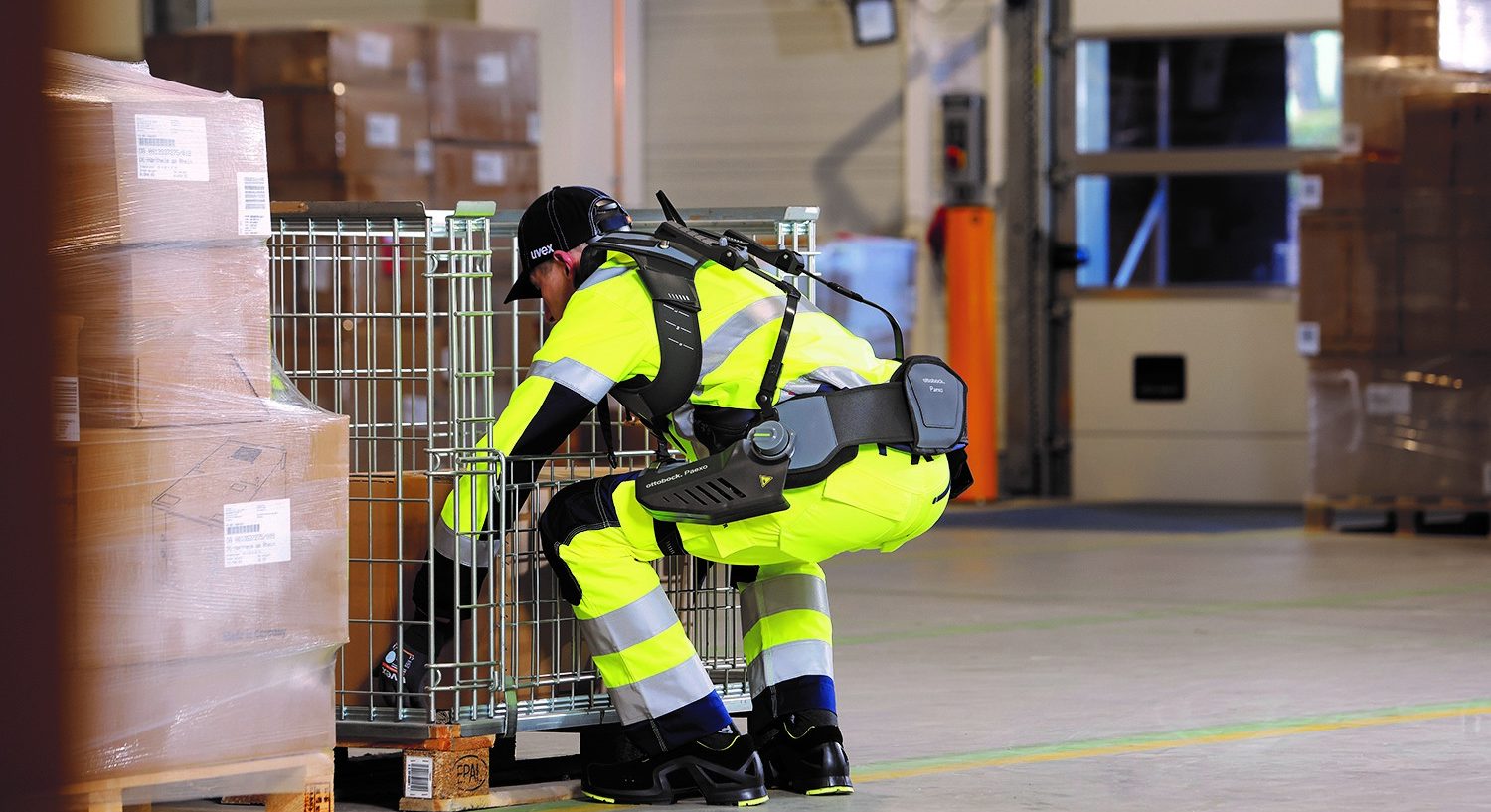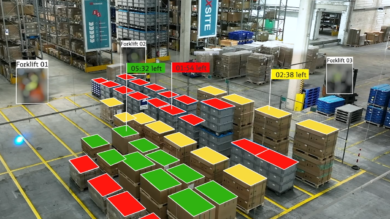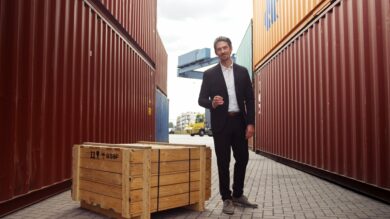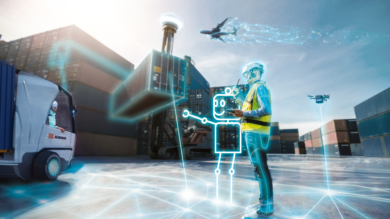Do you have challenges in your warehouse? Is one of them having difficulty filling staff positions? The industry has been dealing with labor shortages since 2018, way before anyone could have anticipated the impacts of COVID-19. Now the pandemic, consequent lockdowns, and change in purchasing behavior only serve to exacerbate these challenges.
Alleviating fluctuation in the warehouse
In industries like logistics and transportation, blue-collar employee turnover rates can be as high as 70% making it almost impossible to keep up with the ever-increasing supply and demand for goods and services, particularly in e-commerce. Although unemployment rates remain high, there is still low uptake, particularly in warehousing roles, making it even more important to retain quality personnel to ensure your business can keep up with daily operations and profit margins.
Challenges in retaining workers have steered some companies towards offering incentives or increased wages. While wages act as a good incentive, a recent survey showed that 78% of turnover has nothing to do with wages. It is equally essential to offer good working conditions, flexible shift scheduling, and other benefits to retain a workforce.
Now that we understand the current landscape, what are the possible solutions? With a limited pool of workers, competition dangling wages to resolve short-term gratification – what if you can offer something money cannot buy, like time, energy, sustainable workload reduction, and providing prolonged opportunity?
Enhancing the limits of human strength
At the 2021 A+A Conference at the Fraunhofer IPA in Dusseldorf, Germany, DB Schenker and Ottobock presented exoskeletons as a potential solution to enhance human strength, bring relief to the user, and drive productivity gains for certain processes in the business.
As the name suggests, an exoskeleton is an external frame worn to support the body to enhance biological capacities. Powered by electric motors or own body`s energy, the structure gives limbs extra movement and strength. So how can concepts such as robotization enhance human resilience and sustain employment? With the ergonomic design of workplaces and implementation of health management initiatives to reduce physical strain on personnel, offering an attractive working environment in times of a shortage of skilled workers has become even more critical.
Gerald Müller, Vice President of Industrial Engineering at DB Schenker, shared that non-motorized exoskeletons that work with the body’s energy (so-called energy harvesting) recorded significant relief to users lifting and carrying goods. In a test phase in July 2021, exoskeletons were used to obtain comparative values. The workflows were recorded and evaluated both with and without the exoskeletons. These tests showed an encouraging acceptance of the exoskeletons among the DB Schenker employees. Productivity increased with the reduced fatigue of the employees due to the relief provided by the exoskeleton. In addition to the proven relief, the exoskeleton has improved posture in load handling.
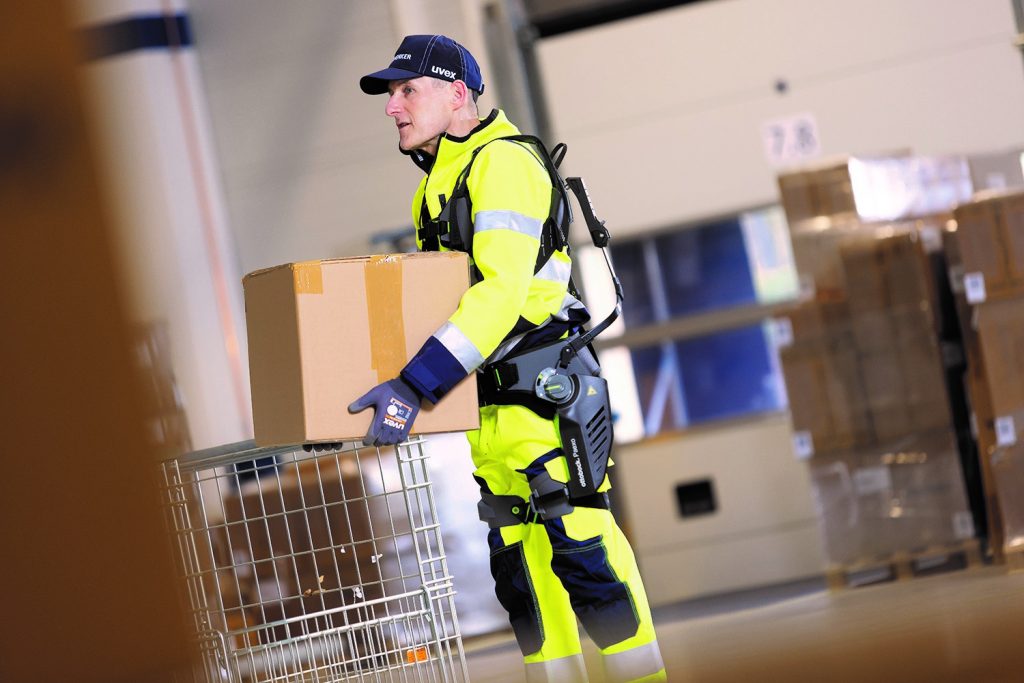
Müller noted two key outcomes during his presentation to support this claim. First, the perceived overall burden per blue-collar employee is reduced by approximately 23 tons per week when unloading containers. Secondly, using the exoskeleton increases the handling time by about 19% during container unloading and palletizing.
“One thing we have learned from previous experiences is that there isn’t one exoskeleton that is suitable for all applications. Different types are needed depending on the process requirements. Even where the goal of promoting health remains the same.”
Exoskeletons, positive prospects for the future
Exoskeletons can be a great help in various areas, both as a medical exoskeleton designed to help people with mobility disorders as well as a work tool for occupational support. It is, therefore, to be expected that this technology will be continuously further developed in the coming years. Working in a warehouse is often a strenuous job, and an exoskeleton works as a supporting tool to prevent immediate injuries and injuries that progress over time.
When employees feel valued and taken care of, they usually stay with the company much longer and are willing to work harder. Whether you are currently finding it challenging to maintain a steady and reliable workforce or anticipating a future where that is the case, investing in automation and technology will allow you to put your existing labor force to use more effectively. With reliable data confirming the successful implementation of exoskeletons in the workplace, perhaps it will become a natural part of the everyday warehouse workplace in the future.
Published: February 2022


